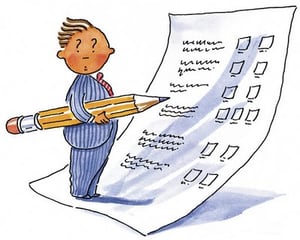 When buying new forklifts for your fleet, usage and performance will always point you in the right direction, and grant you the ability to create a preliminary want list. But while it’s easy to get excited about the latest and greatest models, unfortunately there’s no skirting around the question that every decision-maker loathes: how are you going to pay for your new forklifts?
When buying new forklifts for your fleet, usage and performance will always point you in the right direction, and grant you the ability to create a preliminary want list. But while it’s easy to get excited about the latest and greatest models, unfortunately there’s no skirting around the question that every decision-maker loathes: how are you going to pay for your new forklifts?
This decision starts by determining whether you are going to lease or buy. While a variety of factors play into what might work best for you, there are distinct advantages for both of those scenarios.
The Case for Leasing Your Forklifts
Simply from a financial standpoint, leasing allows a company to hold on to valuable cash since payments are spread out over the lease term. Depending on a company’s financial position, this might be helpful if that cash is needed for other investments. Your lease can also be designed to stay off the lessor’s balance sheet, with the lessee only reporting the required rental expense for the forklift. Ultimately, leasing gives you the most financial flexibility.
One of the biggest advantages of leasing is avoiding the use of obsolete equipment. Acquiring and disposing assets is less of a hassle due to the involvement of the leasing company, and at the end of the lease term you can opt for newer models—just as your previous models start needing more maintenance.
The Case for Buying Your Forklifts
On the other hand, owning your own forklifts grants you two distinct benefits: you have flexibility in usage, and you have complete control over the assets. While leasing allows a company to save cash, if a company has excess capital, purchasing forklifts starts to make more sense—especially when you consider that you can recoup some of your purchase price later through resale (and can use any depreciation to offset income).
The Case for Rental
Fledgling operations, or established locations that are beginning a new application, may want to rent several initial vehicles to try them out and see what works best for the operation. This will also give you an idea of how many trucks will be needed at peak utilization. This is a great short-term option to gain the learning required before making a more permanent commitment.
Cost Analysis Is King
In our experience, the best forklift dealer partner will help you weigh the advantages and disadvantages of leasing versus buying versus renting for your specific operation. Ultimately, to make the right decision a cost analysis is crucial. Performing this cost analysis can be painful, but doing so beforehand will ensure that you’re creating realistic parameters that fit the budget your company has set aside for your material handling operation. A true comparison will take into account every financial implication, from payment timing to interest rates.
Every company is different, so unique factors like capital availability, tax treatment, and financial statement considerations must be taken into account. Year to year, companies have unique financial strategies that affect spending, and those executive-level decisions will most certainly impact the lease vs. buy decision.

